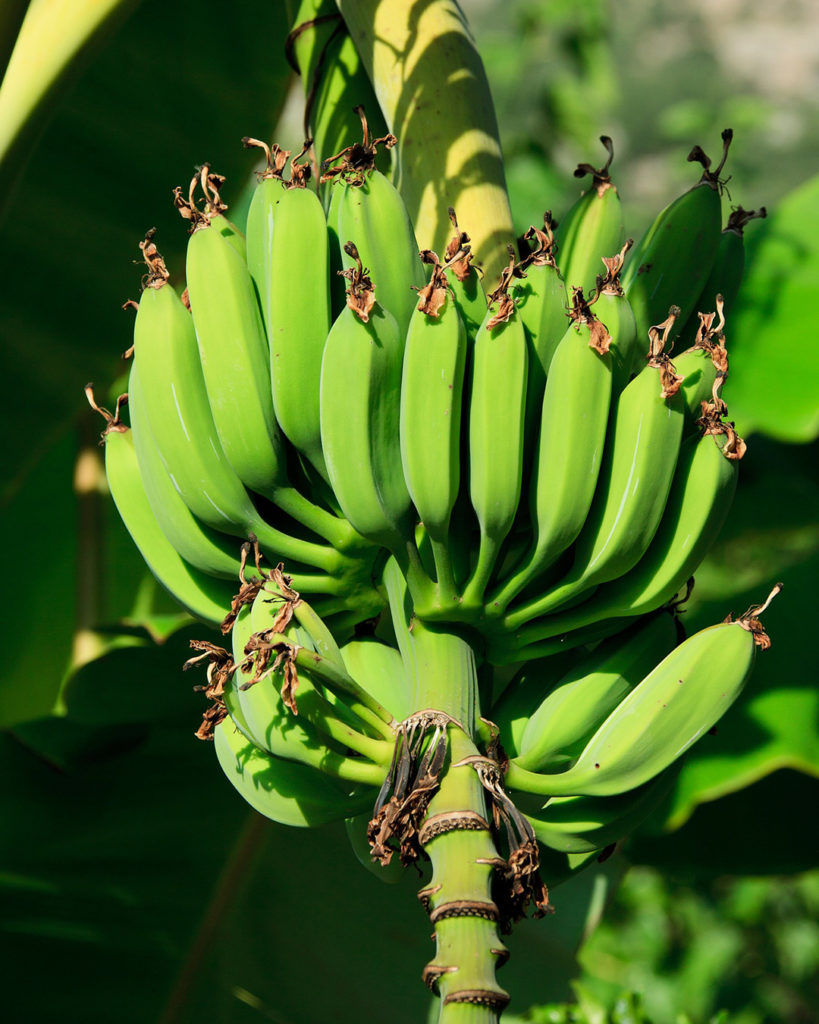
Cameroon
Banana
Musa Paradisiaca Sapientum

General Description / Cultural Significance
The fragrance of bananas is significant for the people of Cameroon. Banana cultivation is intimately linked to Cameroon’s social and economic development in many regions of the country. Second to timber, banana is a staple and main source of export revenues. One Cameroonian worker out of seven is involved in banana production or commercialization. Today Cameroon is one of the top 5 banana producers in the world. Historically, before the implementation of banana plantations in Cameroon by the Germans in 1910, banana was already produced for survival and for economic reasons. It is believed that all varieties of bananas are native to Africa and have been grown near settlements for thousands of years. In 2000 there was evidence published in the Journal of Archeological Science citing banana cultivation in Cameroon as early as the first millennium B.C. There is other archeological evidence that Musa was the early cultivated banana. It is not uncommon for Africans to be able to identify the species and ripeness of a banana by its smell alone.
There are dozens of bananas and plantain cultivars that grow in the country and that are regularly used in the diet of Cameroonians. They are served roasted or fried. They are also eaten in sauces and as porridges.
Climate Change/Conservation Status
Cameroon is particularly exposed to climate change, and because each of its regions is different from the other, climate change is impacting each one differently. The Sahelian zone is already facing desertification and the coastal areas are being infiltrated by rising sea levels. Extreme weather events with violent winds and heavy rainfall are increasingly common and temperatures are hitting record highs. From 2012 to 2016, Cameroon began working on the development of plans to mitigate the effects of climate change. In 2015, they validated the National Adaptation Plan for Climate Change.
As of 2019, Cameroon’s banana production was uniquely unaffected by climate change whereas all other countries growing banana were showing yield declines. However, Cameroon is heavily dependent on their agriculture and banana production which requires stable climate conditions. Cameroon’s financial resources for adaptive strategies are limited.
Alternate Names
French plantain banana
Plantain
Sources
Akter, S., & Imam, M. Z., 2011. Musa paradisiaca L. and Musa sapientum L.: A Phytochemical and Pharmacological Review. Journal of Applied Pharmaceutical Science, [website] pp. 14-20. ISSN: 2231-3354
Mbida, C. M., et. al., 2002. Evidence for Banana Cultivation and Animal Husbandry During the First Millennium BC in the Forest of Southern Cameroon. Journal of Archaeological Study, [website] 27(2), pp. 151-162. DOI: 10.1006/jasc.1999.0447
The Minister Counselor, Embassy of the Republic of Cameroon, Washington, D.C. This statement can be found on the World Sensorium original website.
Ollong, K. A., 2016. Sustainability Issues in the Cameroon Banana Supply Chain. University of Bamenda. [website] DOI: 10.2139/ssrn.2717648

